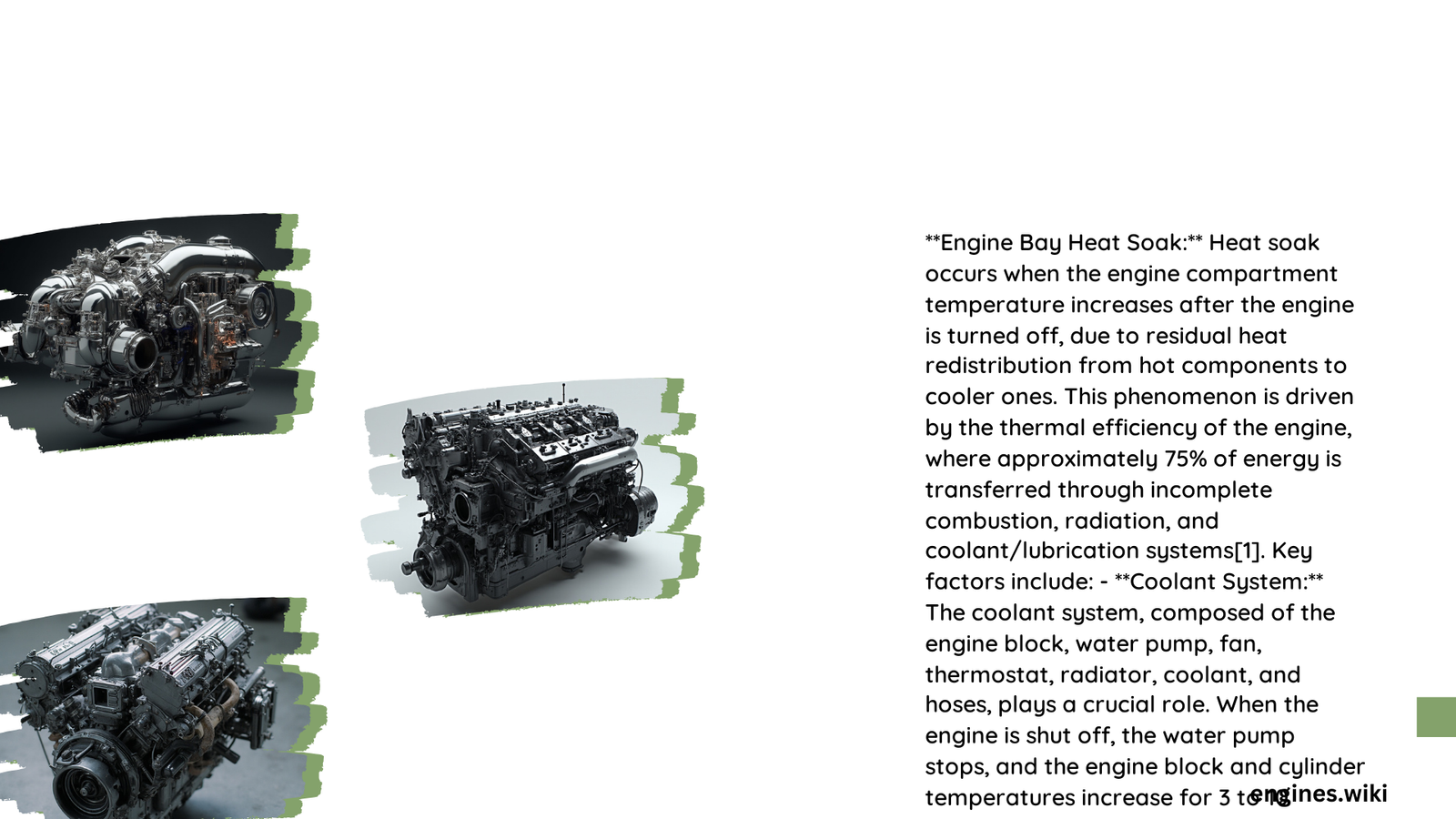Engine bay heat soak represents a critical thermal phenomenon where excessive heat accumulates in the engine compartment, potentially compromising vehicle performance, component longevity, and overall mechanical efficiency. This complex thermal challenge occurs when residual heat remains trapped in the engine bay after vehicle operation, causing temperature escalation beyond optimal operational ranges and potentially leading to significant mechanical stress and performance degradation.
What Causes Engine Bay Heat Soak?
How Does Heat Accumulate in Engine Compartments?
Heat soak emerges from multiple interconnected factors:
- Thermal Radiation: Engine components generate substantial heat during operation
- Limited Ventilation: Compact engine bay designs restrict natural cooling
- Ambient Temperature: High environmental temperatures exacerbate thermal retention
- Extended Idle Periods: Reduced airflow increases heat concentration
What Temperature Ranges Indicate Critical Heat Soak?
| Temperature Range | Performance Impact | Risk Level |
|---|---|---|
| 190-220°F | Optimal Performance | Low |
| 220-250°F | Reduced Efficiency | Moderate |
| 250-300°F | Potential Component Damage | High |
| 300°F+ | Severe Risk | Critical |
Strategies for Mitigating Engine Bay Heat Soak

Can Thermal Insulation Materials Help?
Effective thermal management involves strategic material selection:
- Ceramic Heat Shields
- Withstand temperatures up to 1,200°F
- Redirect thermal energy away from sensitive components
-
Lightweight and durable design
-
Reflective Thermal Barriers
- Aluminum-based materials
- Reflect up to 90% of radiant heat
- Easy to install and cost-effective
What Cooling Techniques Reduce Heat Accumulation?
Active Cooling Modifications
- Enhanced Radiator Systems
- Larger core designs
- Improved coolant circulation
-
Higher thermal dissipation capacity
-
Electric Fan Upgrades
- Programmable temperature activation
- More efficient heat management
- Reduced parasitic engine load
Performance Implications of Unmanaged Heat Soak
How Does Thermal Stress Impact Engine Components?
Prolonged heat soak can cause:
- Accelerated metal fatigue
- Gasket and seal degradation
- Reduced lubrication effectiveness
- Increased friction and wear
- Potential catastrophic component failure
What Are Long-Term Consequences?
- Decreased fuel efficiency
- Reduced horsepower output
- Increased maintenance costs
- Shortened engine lifespan
Advanced Thermal Management Techniques
Can Aftermarket Solutions Provide Relief?
Recommended interventions include:
- Turbo Blankets: Contain exhaust system heat
- Thermal Wraps: Protect critical wiring
- Venting Modifications: Improve engine bay airflow
- Performance Radiators: Enhanced cooling capacity
Diagnostic and Preventive Approaches
How Can Owners Monitor Heat Soak?
- Install infrared temperature sensors
- Regular thermal imaging inspections
- Track coolant temperature consistently
- Implement proactive maintenance schedules
Technical Recommendations
- Use high-temperature silicone hoses
- Select synthetic lubricants with superior thermal stability
- Maintain proper coolant levels and quality
- Consider periodic professional thermal assessments
Cost-Benefit Analysis
| Intervention | Cost Range | Thermal Reduction | Performance Improvement |
|---|---|---|---|
| Heat Shields | $50-$200 | 15-25% | Moderate |
| Performance Radiator | $200-$500 | 25-40% | Significant |
| Comprehensive Thermal Management | $500-$1500 | 40-60% | Substantial |
Conclusion
Effective engine bay heat soak management requires a holistic approach combining material science, engineering principles, and proactive maintenance strategies.
